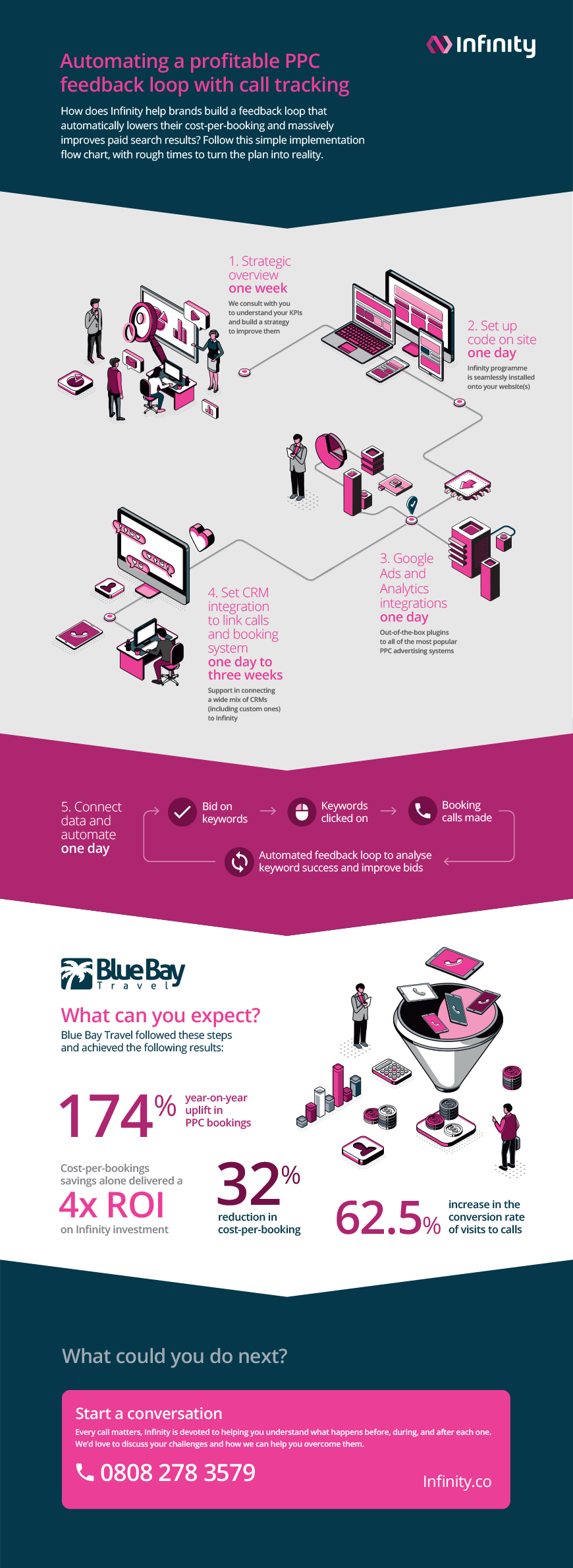It used to be so simple. In halcyon days gone by, people would see an ad or realise they had a need, and start along a clear and linear path to purchase. For sales and marketers, it was easier to follow the funnel and make improvements. Then the 'messy middle' came along...
What is the messy middle?
Today, it’s different. A flurry of high and low intent touchpoints across multiple channels, combined with all the different ways we advertise to our audience, arguably create more of a spider’s web than a traditional funnel.
This ‘messy middle’ of the purchase journey is something that Google have recently published a fascinating report on.1 As a call tracking provider that helps clients and agencies understand customer journeys and solve attribution challenges, this was something that we took great interest in.
So at this year’s TFM, we wanted to ask Google about their research in this area. We spoke to Miguel Rodríguez Bueno, a Partner Technical Lead at Google, about why the messy middle presents risks, how it happens, and what some brands are doing about it.
You can still view the whole fireside chat with Miguel for free here.
But to give you a taster, we closed the talk by asking Miguel for three steps that advertisers can start with to shorten their ‘messy middle’. Here’s his tips, as well as a few things he had to say on each one.
1) Start filling your data lake
If you want to understand and improve this messy middle, you need to start by knowing what it looks like. If you’re serious about addressing this challenge, this step must be done as a matter of urgency.
“Building a clear picture of your journeys starts with collecting all of the data possible. Online, offline, CRM, call tracking, call centre, and whatever other relevant sources you can capture. Put it all together in cloud storage so it’s ready for you to escalate and access when necessary.”
2) Structure and store
Of course, having lots of data is no good if it’s not optimised to deliver insight. This is certainly not an overnight step, but the earlier you acknowledge this task and make plans to take it on, the quicker you will be able to use your data to make smarter decisions that lead to smoother customer journeys.
“Once all of your data is collected, we need to transform what we have and turn big data into good data. Make sure it’s in the right place at the right moment when you need to look for it.”
3) Machine learning helps you act faster
At this point you have gathered lots of data and can gain insights from it, but it may still be a challenge to analyse and action anything useful at scale that delivers a competitive advantage.
Now your data needs to help you make good decisions, and make them quickly, possibly even in real time to help convert relevant prospects quicker. Machine learning is only as good as the data you put into it, but if you have done steps one and two well then you should be able to feed high quality data into machine learning tools.
“Last but not least we need to make good decisions based on good data, and these decisions should be taken as quickly as possible, or even before things happen and here is where we can use tools like Google Cloud Machine Learning to preview the future.”
One example of this is what Blue Bay Travel have done with Infinity. You can read the full case study here, but here is a basic infographic on how to set this up and the kind of results it can achieve.

The full 25 minute session between Edd and Miguel is now available to watch today.
One of the key things Miguel spoke about in his talk was the importance for him of working with Google’s tech partners to do things quickly that they can’t do on their own. This is why they have been working with Infinity to help enterprise brands gather call data, access it effectively, and use it to optimise their marketing to boost revenue.
For many businesses, a customer picking up the phone is a crucial step in the buyer journey, and the quicker someone decides to call the shorter your customer journey can be. Start a conversation today to see how call tracking can help you achieve this, or download our eBook on how to turn calls into conversions.
References:
1) How people decide what to buy lies in the “messy middle” of the purchase journey, Google, (July 2020)